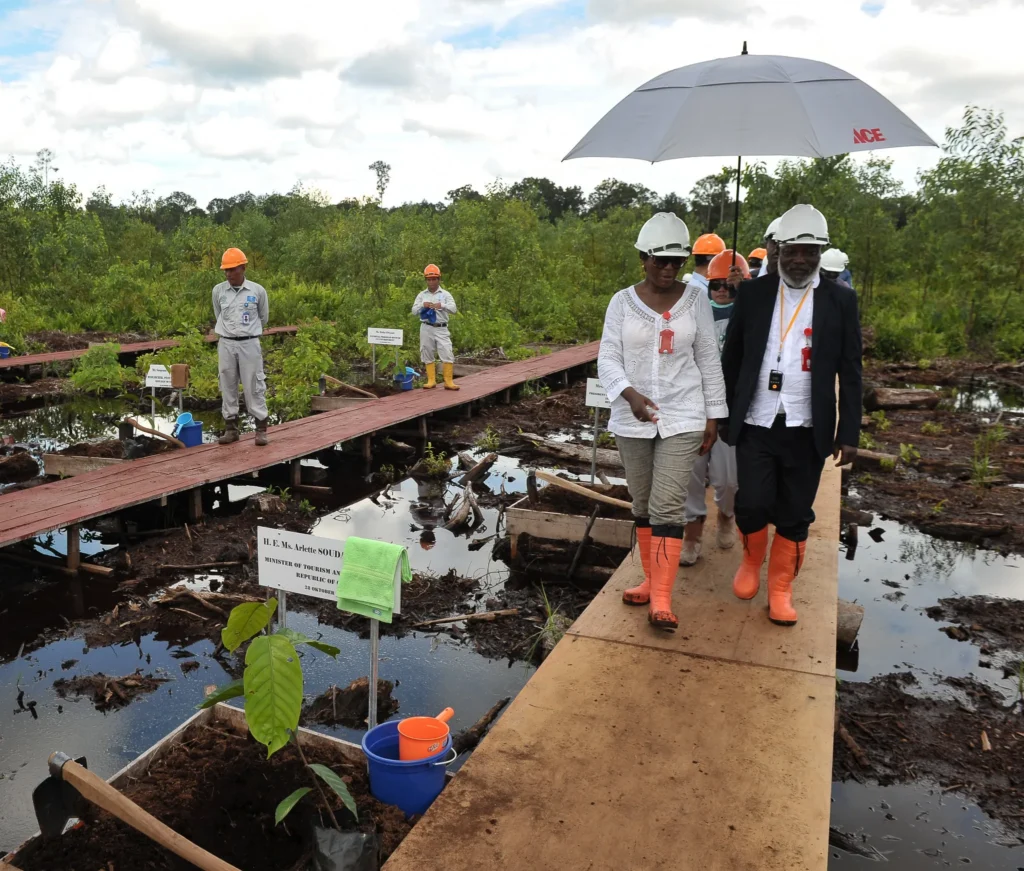Ecological restoration: a solution to degraded ecosystems
Ecological restoration: a solution to degraded ecosystems Ecological restoration: a solution to degraded ecosystems Ecosystems around the world are under increasing pressure: deforestation, pollution, mining, and climate change. Cameroon is no exception. Vast areas once covered in forests or savannahs have lost their vitality, leading to a dramatic loss of biodiversity and a weakening of people’s livelihoods. Faced with this reality, ecological restoration appears to be an essential solution. Ecological restoration involves returning a degraded ecosystem to a more natural and functional state. It is not limited to planting trees: it involves recreating a balance between soils, vegetation, wildlife, and human activities. This process can take several forms, adapted to the local context. Reforestation and agroforestry are among the best-known initiatives. By introducing local species that are beneficial to local populations, soil fertility is restored, wildlife regeneration is encouraged, and living conditions are improved. In agricultural areas, integrating trees into fields helps combat erosion and optimize production. Restoring wetlands and rivers is also crucial. These ecosystems play an essential role in water regulation, flood prevention, and fish habitat. Actions such as combating siltation, regenerating mangroves, and protecting riverbanks can have lasting positive impacts. Another often overlooked aspect is the social dimension of restoration. Involving local communities in the process is essential. Not only do they bring valuable knowledge of the territory, but their participation also ensures that the results are sustainable. When local communities see a direct benefit (sustainable firewood, fruit, improved soil fertility), they become the primary guardians of restored ecosystems. Ecological restoration also offers economic benefits. It can be integrated into payment for environmental services projects, where communities are compensated for protecting and restoring forests. It also contributes to the fight against climate change by increasing carbon sequestration capacity. In short, restoring nature is an investment in the future. It means reviving ecosystems, improving people’s quality of life, and creating a balance between exploitation and preservation. For Cameroon, ecological restoration represents a strategic lever for sustainable and inclusive development. LaDirection Writer & Blogger Leave a Reply Annuler la réponse Connexion en tant que LaDirection. Modifier votre profil. Se déconnecter ? Les champs obligatoires sont indiqués avec * Message* Article précédent Recent News Uncategorized Ecological restoration: a solution to degraded ecosystems LaDirection • août 16, 2025 Uncategorized Sustainable agriculture and biodiversity: a possible balance LaDirection • août 16, 2025 Uncategorized Local communities, key players in conservation LaDirection • août 16, 2025 Uncategorized Biodiversity in Cameroon: a treasure to be preserved LaDirection • août 16, 2025 Join Together For Charity You can support us and participate by making donations to our company Donate Now




